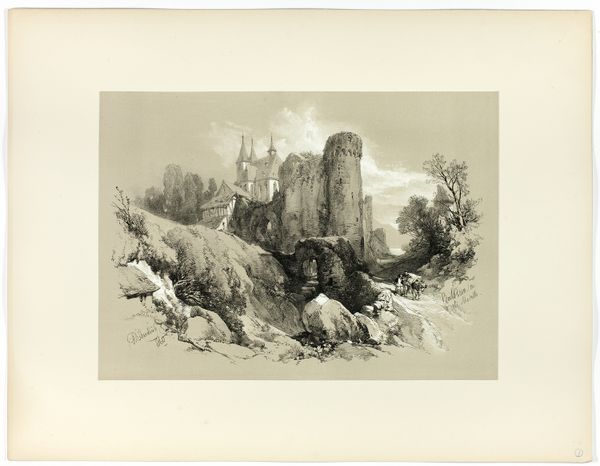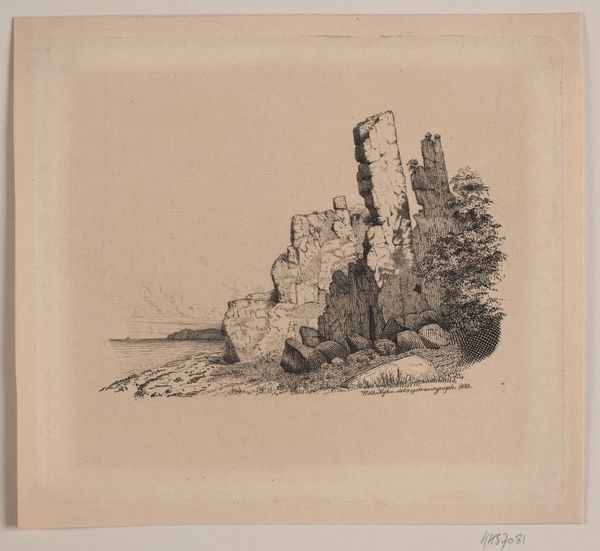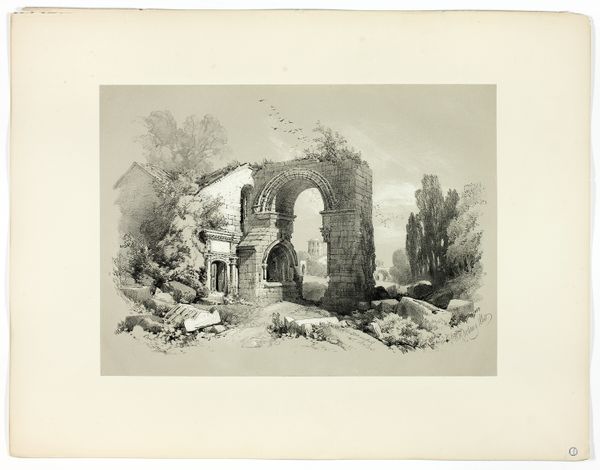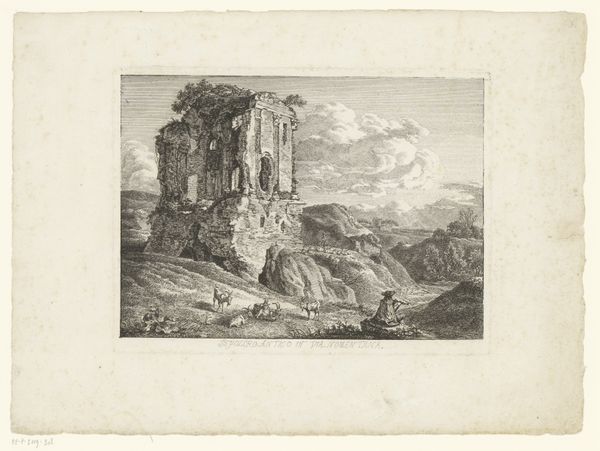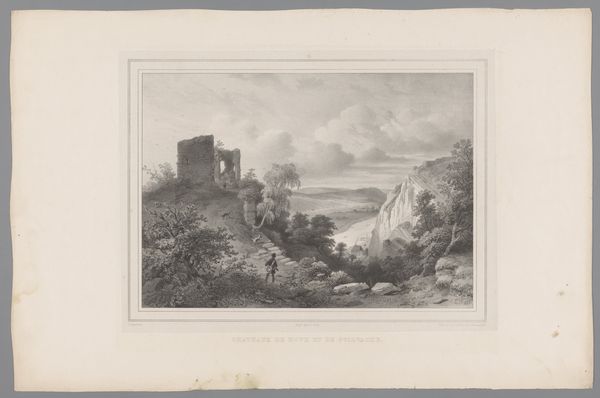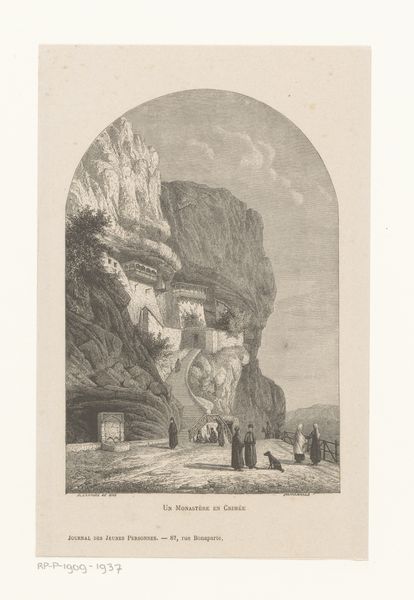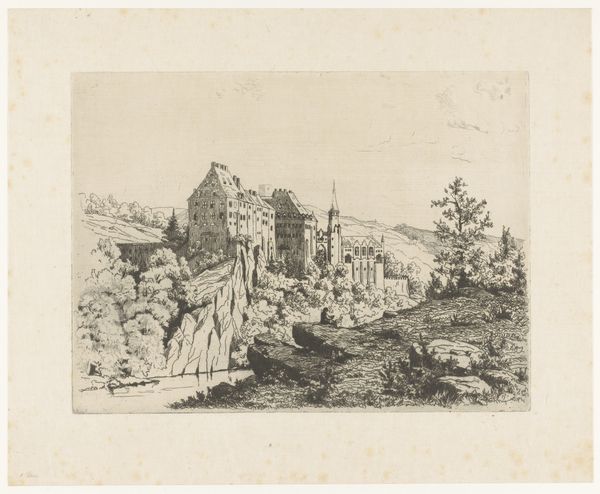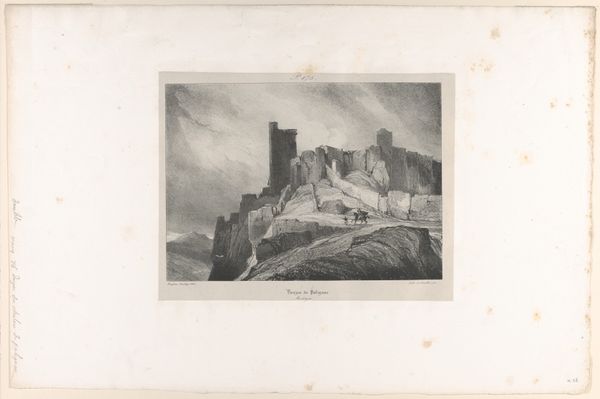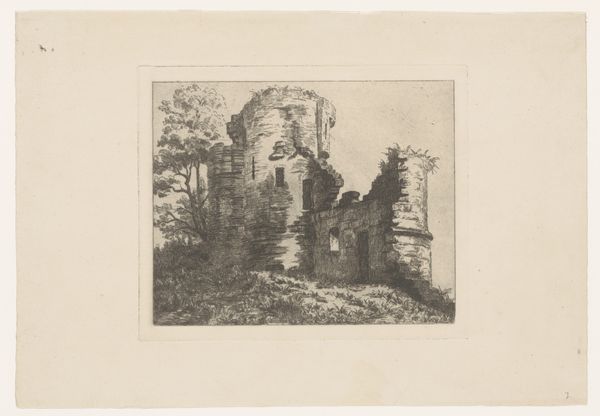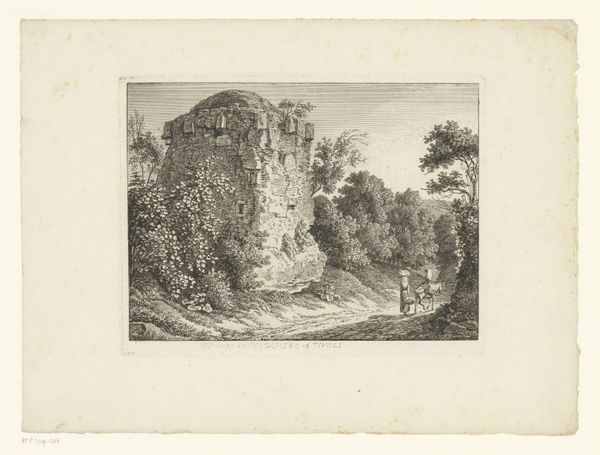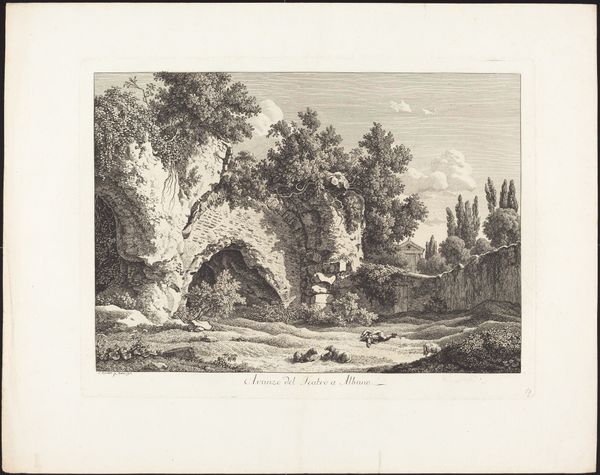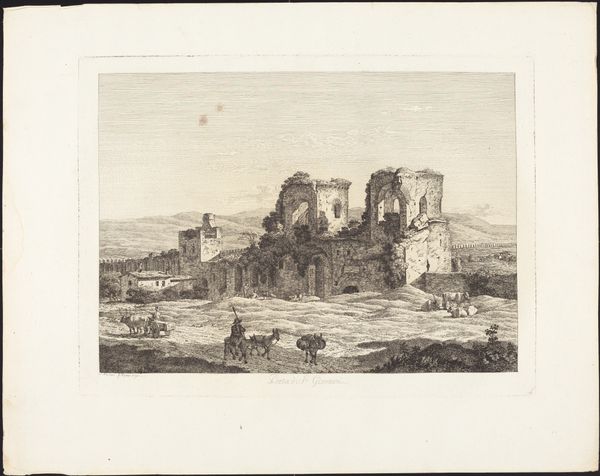
Roman Baths at Treves, from Picturesque Selections 1860
0:00
0:00
Dimensions: 278 × 384 mm (image, primary support); 430 × 560 mm (secondary support)
Copyright: Public Domain
James Duffield Harding made this lithograph of the Roman Baths at Treves using ink and crayon. Look closely, and you'll notice the rough texture, created by applying greasy materials to the lithographic stone. Harding then likely used acid to etch the design before printing. This process allowed for relatively quick reproduction, making images like this accessible to a broader audience during the 19th century. The print emphasizes the ruinous state of the baths, overgrown with vegetation. This aesthetic of decay was popular at the time, fitting into a Romantic sensibility that valued the sublime power of nature over human construction. Yet, the print itself is a product of industrial technology, a multiple made using sophisticated chemical and mechanical processes. It reminds us that even images of apparent naturalness and decline are always mediated by the means of their production. By understanding the material basis of this lithograph, we can appreciate how Harding skillfully blurred the lines between handcraft and industrial manufacturing.
Comments
No comments
Be the first to comment and join the conversation on the ultimate creative platform.
